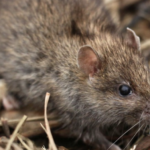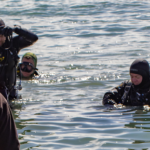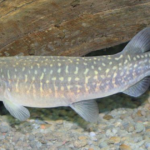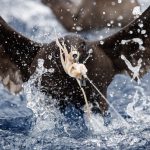Every summer in New Zealand, the largest influx of tourists we get arrive by sea, yet go largely unnoticed. I’m not talking about the bum-bag cruiseship wanderers of Wynyard Quarter, or the fancy-set sailors who arrive via superyacht. No, I’m talking about the visiting pelagic species that arrive on the warm current conveyor belt of the tropics pushing down from the north. All aboard for an Aotearoa summer, no passports required.
They arrive in their millions, attracted by the bounty of baitfish and plankton-plumped waters thrown out from our coasts. I often wonder, if more people could see the tropical paradise that exists on our doorstep, would it create a stronger connection between us and the sea? Maybe.
Anyway, right now is peak season. So last month I left Auckland’s Half Moon Bay and headed out off the backside of Great Barrier Island looking for the type of deep blue water that big fish love to hunt in.
It’s a beautiful thing when you think about it. In just one day, from our country’s most populous city, I managed to see an incredible array of visitors, including two marlin, a short-billed spearfish, mahimahi, schools of skipjack tuna, swarms of saury, a pod of large whales, two manta rays, one spine-tailed devil ray and — unbelievably — more than 50 sunfish. Upon returning, I learned that someone in the Coromandel had also landed a wahoo, and that a whale shark had also been seen.
A friend asked if I had gone all the way to Indonesia to see these things, unaware that they are much closer to home. He was surprised when I told him that the manta ray was at Channel Island, a small island inside the Hauraki Gulf.
People are also surprised to learn that the gulf itself is home to 40-year-round resident baleen whales called Bryde’s whales (but for some reason are pronounced ‘Brooders’).
Kelly Tarlton’s also runs a rehab programme for exhausted turtles that turn up, not that some travel far, with some estuaries in the Far North boasting small numbers of year-round inhabitants. Some turtles like their stay at Kelly Tarlton’s so much that no matter where they are released, they swim right back to the aquarium HQ and attempt to get back in. Fair enough.
Other summer visitors we used to get in great numbers are yellow fin tuna. However, due to commercial exploitation in off-shore waters, visits from these magnificent yellow sickled beasts are now rare. Whereas once in season you could catch them just several hundred metres off Castle Rock in the Coromandel, now they are so scarce that a fishing tournament in Whakatane was forced to change its name. Although a few do sneak through each year, it’s but a tiny fraction of how things used to be as, sadly, super seiners using satellite telemetry located their tropical spawning grounds and pursued them to the point of collapse.
If nothing else, it proves that fish aren’t bound by borders and going forward we are all going to have to better manage this as demand for fish only increases.
There’s something really special about these warm-water visitors arriving like clockwork heralding true summer each year. People often ask what the attraction is in game fishing, if you often don’t catch anything. However, like taking a gun for a walk in the bush, it’s often nothing to do with what you come home with, but the experience itself. Fishing just provides an excuse to get out among the absolute best of what nature has to offer.
Clarke Gayford hosts TV Show Fish of the Day (http://fishoftheday.tv/)
Article reproduced with permission of the New Zealand Herald.








